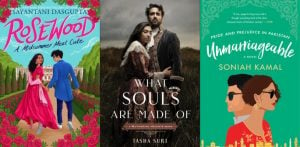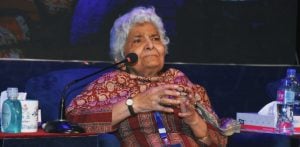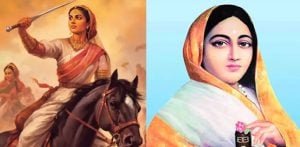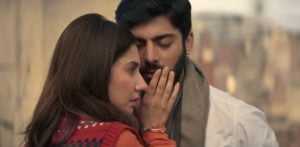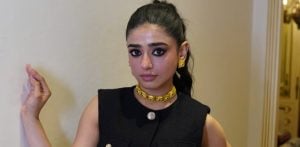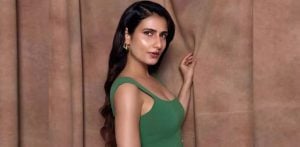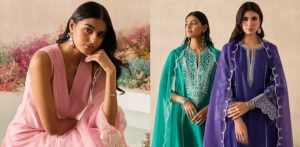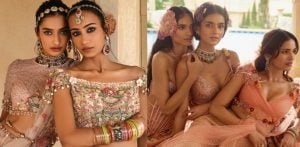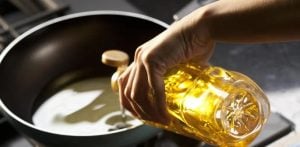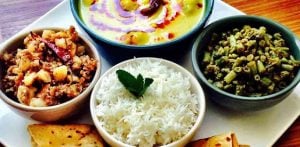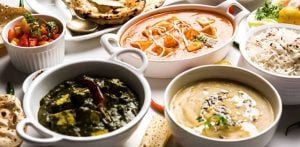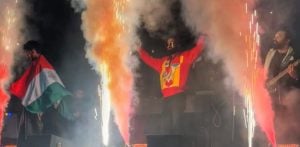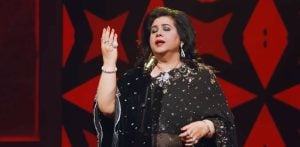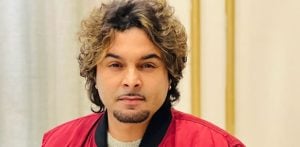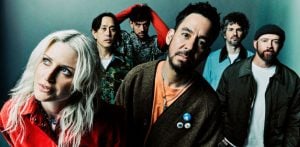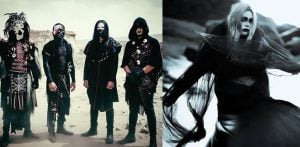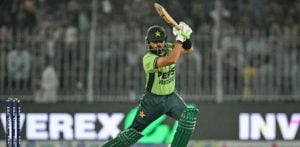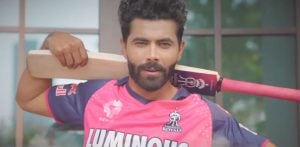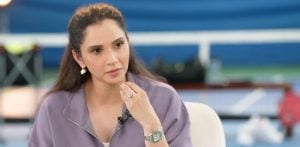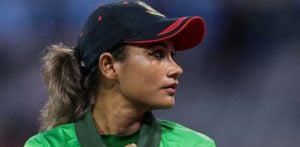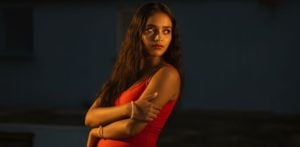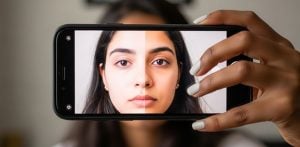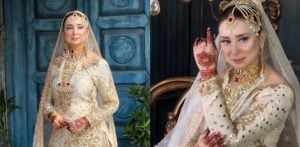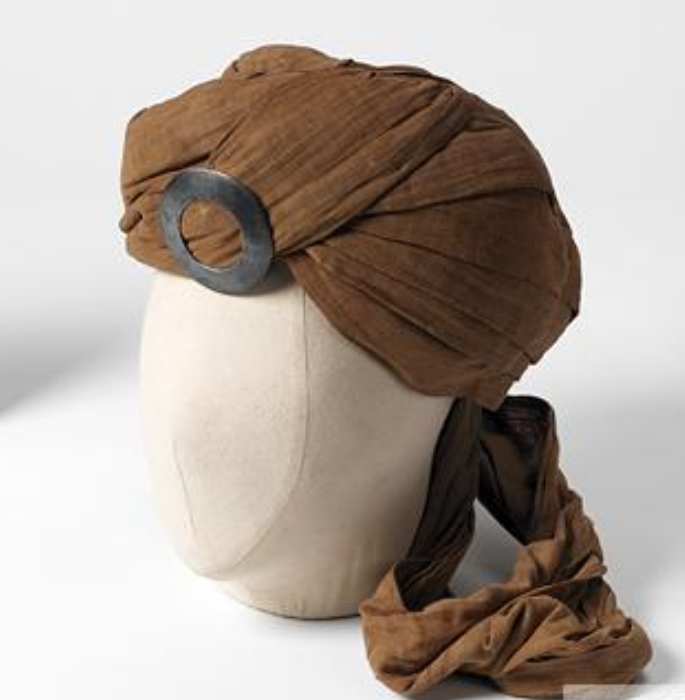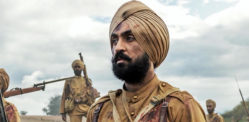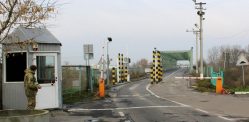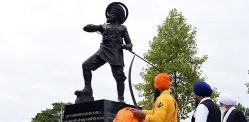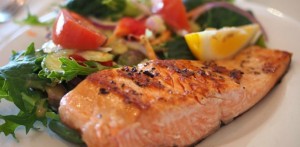"There were men in turbans in the same trenches"
During World War I, Indian soldiers and their turbans played a significant role in various campaigns as part of the British Army.
The turban, a traditional headdress of India, often leads to confusion, particularly when compared to the Arabian keffiyeh.
Despite a shared origin and both being made of cloth, these two headpieces are distinctly different.
Turbans are prevalent in various regions, including South Asia, the Middle East, the Arabian Peninsula, North Africa, and parts of the Swahili Coast.
In India, the turban is called a pagri, signifying its traditional tying method.
The multitude of styles adds to the complexity of understanding turbans.
In the Indian Army, post the Indian Mutiny, Muslim and Sikh sepoys and sowars wore turbans, each with distinct styles.
Hindus also adopted turban-wearing, often following the Muslim style.
With such a vast history, when Indian soldiers were called up to help the British, there were many conflicts.
The British didn’t understand the concept or styles. So, they distinguished soldiers via their turbans and pagris depending on the style.
But, how were these turbans donned and what role did they play in the history of World War I?
Turban vs Helmets
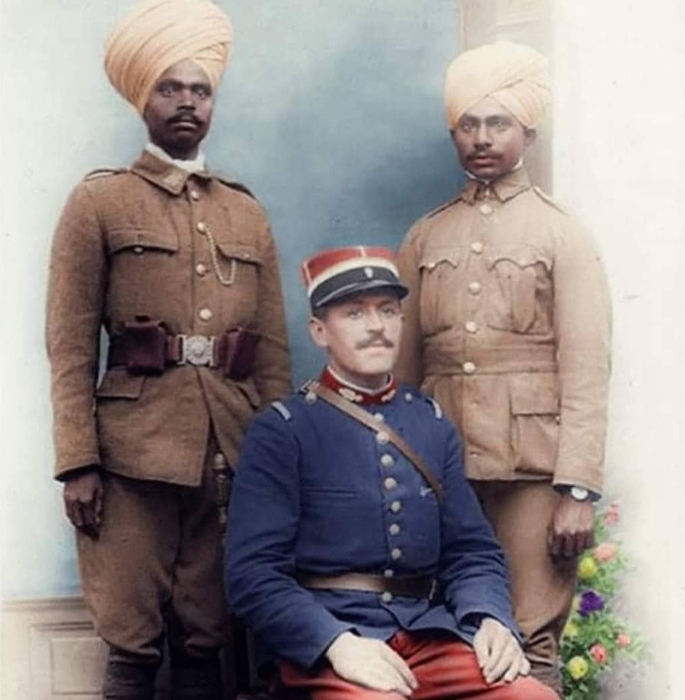
In the 19th century, before WWI, Sikhs displayed a reluctance to don caps or hats in military service.
Despite their strong aversion to military hats like the shako (a tall, cylindrical cap), a distinct sentiment emerged regarding the acceptance of helmets.
An intriguing glimpse into the mindset of 19th-century Sikh soldiers is preserved in a letter exchange.
The dialogue was between Henry Lawrence, the Resident at Lahore and Agent to the Governor-General, and Lord Hardinge, the British Governor General of India.
This correspondence unfolded during Lawrence’s efforts to enlist Sikh soldiers into the British Indian Army following the First Anglo-Sikh War.
As noted in the 1873 book, Life of Sir Henry Lawrence, the letter read:
“I have talked to several men as to their entering our service.
“They at once said they would be delighted and would go wherever we liked; but that they hoped we would allow them to wear their hair and turbans.
“The hair, I observed, would be respected, but turbans could not be allowed.”
“After some talk, they said there would be no objection to helmets or caps of iron.
“I thought that this would help us out of the difficulty.
“I hope that your Excellency will approve of the idea, and authorise me to say that iron or steel caps will be permitted and that their hair will not be interfered with…
“The Sikhs say that, according to their holy books, any man who wears a cap will suffer purgatory for seven generations, and a Sikh would prefer death to having his beard cut.”
It is crucial to emphasise that this perspective on wearing helmets was specific to the early to mid-19th century and did not persist into the post-Sikh Empire era of the British Raj.
Sikhs, after being assimilated into the British Indian army in the late 19th century, were allowed to keep their turbans and exempted from wearing helmets.
During World War I, Indian soldiers were fighting in trench warfare in Europe against the Germans.
The British authorities tried to persuade them to wear helmets, but the Sikh soldiers refused to take off their turbans.
Even in the two World Wars, as a part of the British Indian Army, Sikh soldiers continued to wear their turbans.
Helmets were mandatory for all military units except for Sikh soldiers.
There was a controversy among Sikhs regarding the use of helmets, and while they were issued to them, they opted not to wear them.
However, during their deployment to the Somme, where only cavalry units were engaged and the infantry had already moved south, the helmets were conveniently stored on northbound lorries without any inquiry.
The Variations During the British Raj
In his 1960 publication Military Uniforms of Britain & The Empire, Major R. Money Barnes stated:
“The winding of military puggarees had become a skilled accomplishment.
“Throughout the Indian Army, there must have been scores of different styles, each instantly recognizable by those who knew them.
“The variety of patterns in one regiment was due to the class-company system, which dated from after the mutiny of the Bengal Army in 1857.”
Different regiments and communities had unique ways of tying turbans or pagris, contributing to the diversity within the Indian Army.
However, rules during the British Raj meant soldiers had to wear turbans in certain ways.
They were then categorised further as how you wore/tied your turban representing your regiment, class, or race.
As noted by Peter Suciu for Military Sun Helmets, there were 12 groups, each with specific headdress notes and the regiment/class/race they were for as documented on an unidentified report from the period:
*Note: some terminology used is reflective of the time.
Group 1
Design A: The tall pugaree exhibits a subtle expansion as it ascends, with a fringe commonly concluding at the top. The Kullah is only minimally visible in this context.
Regiment/Class or Race: Rajputana Mussalmans, Gujars, Bagri Jats, Rajputaner, Bikaner Jats.
Design B: Slightly shorter in length, yet featuring a prominent Kullah.
Regiment/Class or Race: Konkani Maharattas.
Group 2
Design: A pugaree of medium size that subtly grows larger towards the top, with the Kullah only faintly visible.
The fringe of Dekhani and Hindustani Mussalmans in Hyderabad Regiments concludes at the front.
Regiment/Class or Race: Dekhani Mussalmans, Hindustani Mussalmans, Dekhani Maharattas, Ahirs of East Punjab.
Group 3
Design: Comparable in size to Serial 2, this version is characterized by straight sides and a noticeable Kullah.
Regiment/Class or Race: Afridis, Orakzais.
Group 4
Design A: A slightly diminished pugaree that gradually enlarges towards the top, featuring a prominent Kullah. Typically, the fringe concludes on the left side
Regiment/Class or Race: Punjabi Mussalmans.
Design B: Similar, but with fringe usually ending on top.
Regiment/Class or Race: Yusufzai.
Group 5
Design: Resembling Serial 4, this pugaree tends to narrow inward as it ascends towards the top.
Regiment/Class or Race: Pathans, Hazaras, Khattaks, Baluchis, Brahuis, Mahsud Waziris.
Group 6
Design: A small, circular pugaree that grows larger towards the top.
Occasionally worn by Christians, particularly as part of Britain’s standard headgear, with a tall appearance.
Regiment/Class or Race: Madrasi, Mussalmans, Madrasi Christians (Britain’s standard head).
Group 7
Design: A lofty pugaree that gradually expands as it ascends towards the top.
Regiment/Class or Race: Brahmans, Mers Merats.
Group 8
Design: A round pugaree of medium size, expanding significantly as it progresses towards the top.
Regiment/Class or Race: Every Sikh in the Sikh Regiments of the former Bengal Army, particularly in the 15th and 45th, adhered to a notably higher standard of winding the pugaree than average.
Group 9
Design: A round pugaree of moderate size, with a slight increase in size towards the top. The fringe of the Hyderabad regiments concludes at the front.
Regiment/Class or Race: Hindus from Punjab, Hindus from Rajputana, and Rajputs.
The pugarees worn by Rajputs in the 2nd to 16th Regiments of the former Bengal Army tend to be taller than the average, occasionally reaching heights nearly comparable to those of Serial 7.
Group 10
Design: A pugaree of moderate size, wound at a cross-angle, giving it greater height on the left side.
Regiment/Class or Race: Hindu Jats and Jats except those in serial 1.
Group 11
Design: Small low-crowned round pugaree.
Regiment/Class or Race: Dogras, Tamils, Pariahs and the Gurkha Company in the Guides Infantry Bn.
Group 12
Design: Pillowbox hat.
Regiment/Class or Race: Gurkhas, Gurhwalis.
It was easy to distinguish between a Muslim and a Sikh soldier, even if you didn’t know their specific military unit.
Muslims wore a Khulla, which is a cone-shaped structure that was wrapped with the turban’s pagri, and a shamla was used for additional identification of their unit.
The Khullas were originally made of wicker or straw, covered with cloth, and provided a sturdy cap.
Entering the 20th Century, Khullas were made exclusively of cloth, typically khaki, but variations in grey and blue were also used.
In contrast, Sikh soldiers wore a pagri wrapped around their heads without a Khulla.
During World War I and II, Indian soldiers often didn’t wear steel helmets and wrapped their pagri around their heads while going into combat.
A variety of turban styles from that period are still worn in India and Pakistan today.
Other Variations
A turban from the pre-World War I era worn by the 67 Punjabis, featuring a Khulla reinforced with wicker:
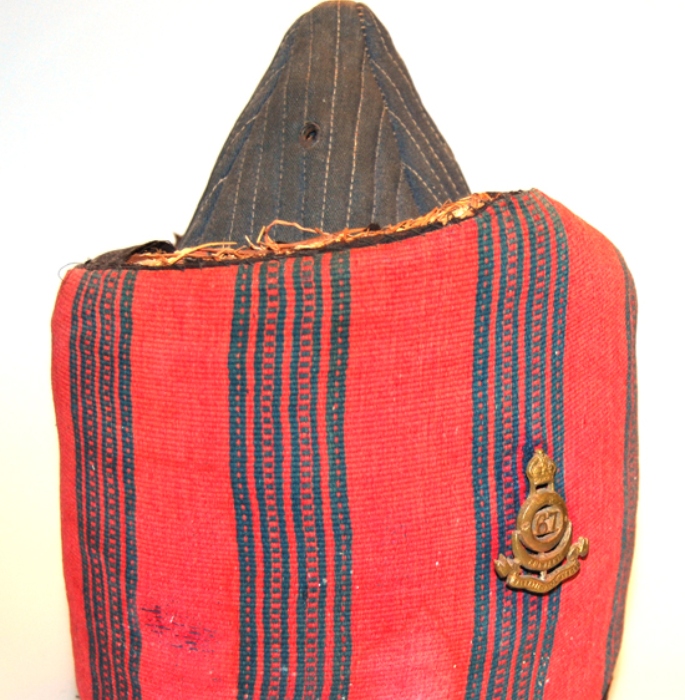
First Indian soldier in the trenches – almost certainly Arsala Khan in 1914:
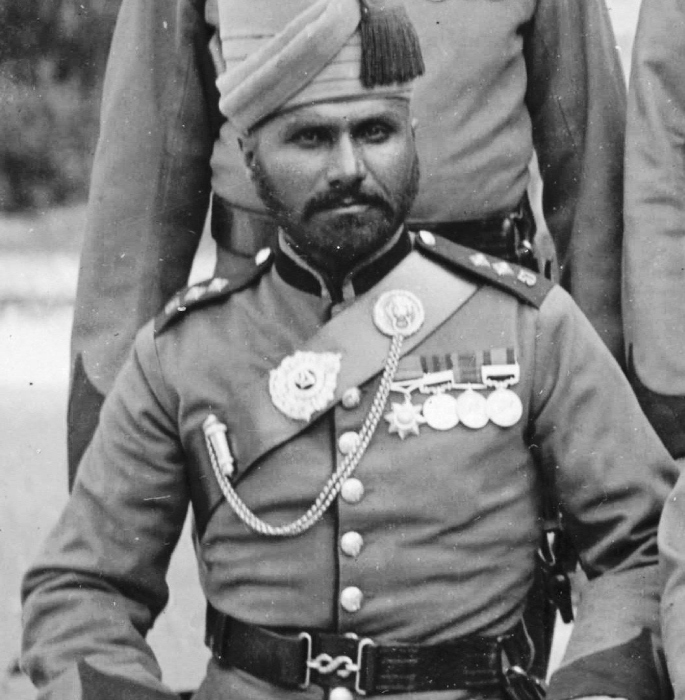
A Khulla dated 1941, lacking the pagri:
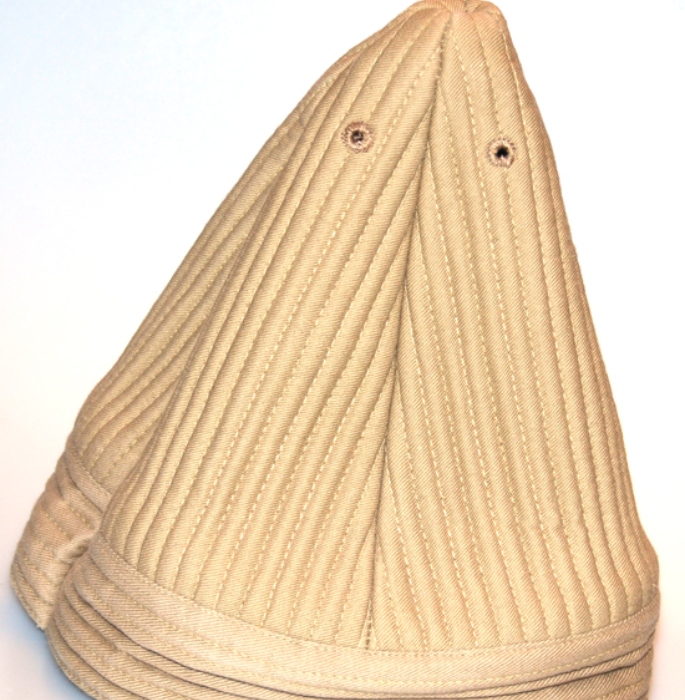
The British “Broad Arrow” stamp indicating the date of production or issuance of this Khulla:
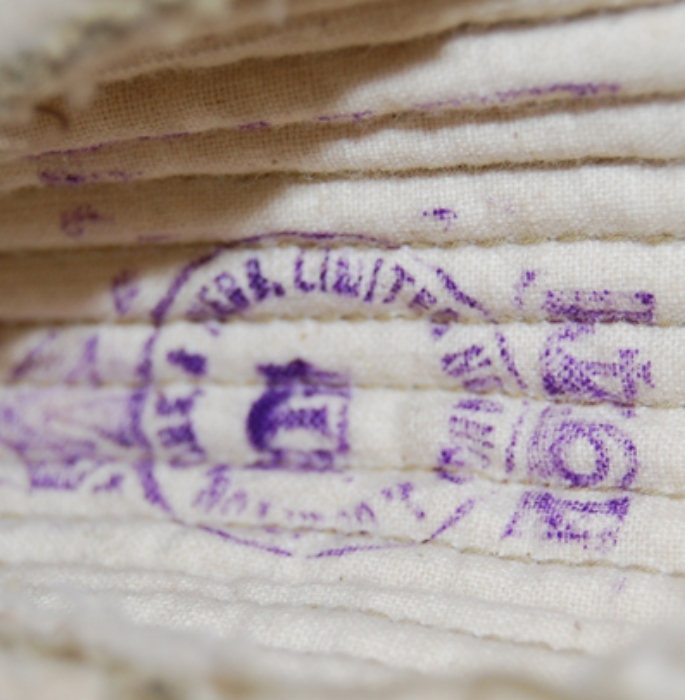
An unwrapped turban from the 1930s, associated with the Governor General’s department:

A turban from the interwar period worn by the Indian Army Air Force, distinguished by a blue pagri:
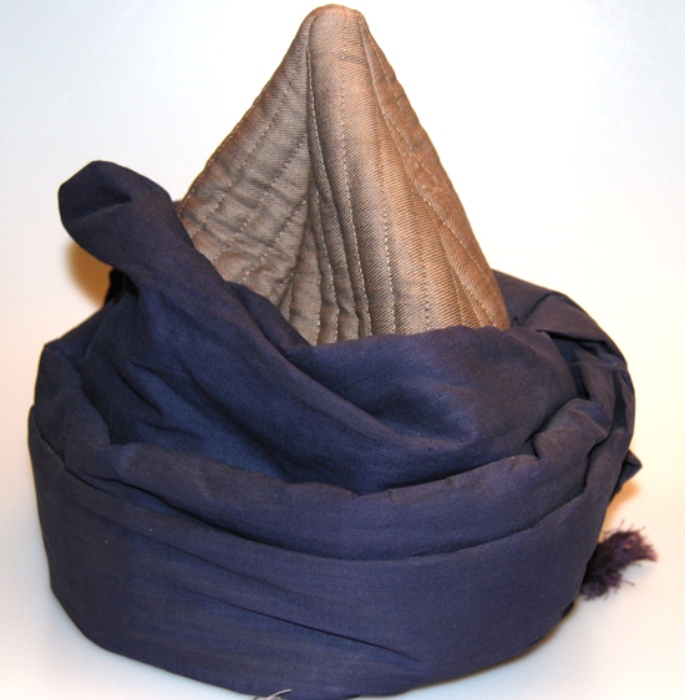
A turban from the pre-World War II era specifically for ceremonial occasions, worn by the Poona Horse Cavalry:
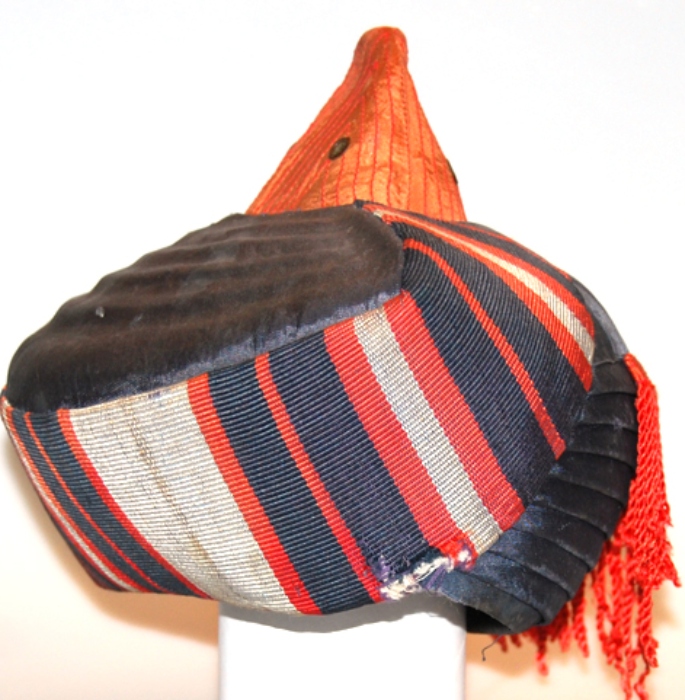
A current-style Punjab Police dress turban, reflective of the contemporary fashion used in Pakistan:
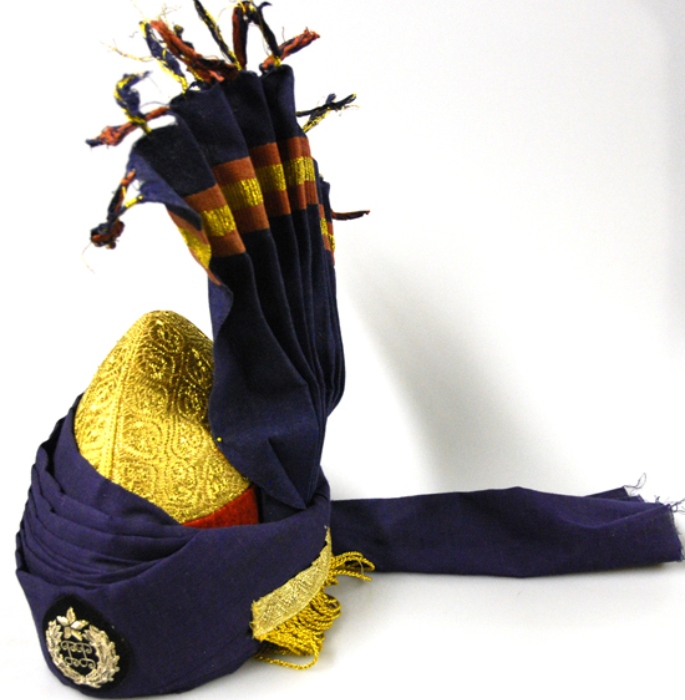
The Importance of the Turban
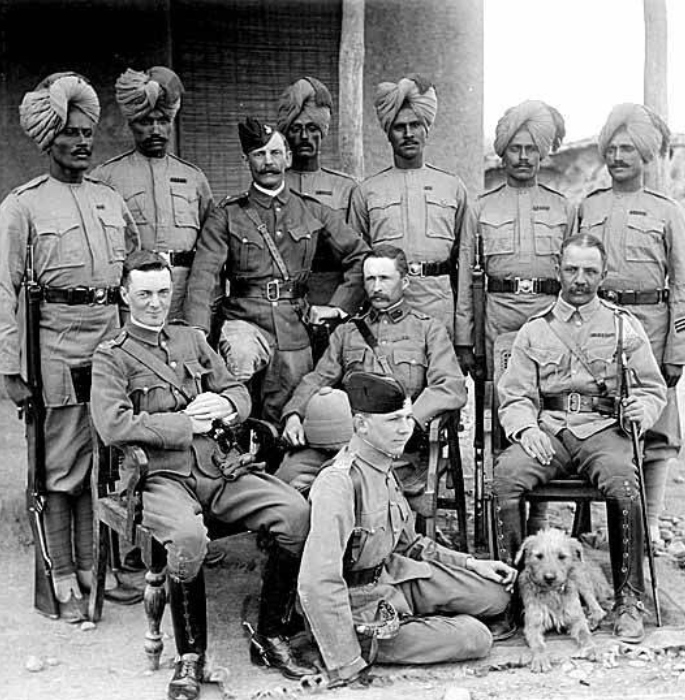
During both World Wars, over 1 million Indian soldiers either died or were wounded serving the British Indian Army.
Remarkably, every one of them adhered to wearing turbans, steadfastly refusing the use of steel helmets despite the protection they offered.
Even in the face of stern opposition, they remained resolute.
Officers at all levels, including the Brigade and Divisional Commander, couldn’t persuade them to don helmets.
A summary court-martial in December 1939 in Egypt tried 58 Sikhs, offering forgiveness if they returned to duty, but none relented.
The Sikhs stood firm, affirming: “No helmets, death is acceptable.”
Even when 200 Sikh soldier prisoners at the cellular jail in the Andaman Islands were tasked with rehearsing precautions against anticipated Japanese air raids, they adamantly refused to wear helmets.
Despite severe punishments, including lashes, flogging, and deprivations, not a single soldier yielded to wearing a helmet.
Their unwavering commitment to their turbans remained unshaken.
The turbans and pagris symbolise the role played by these soldiers during battle. However, it also illustrates how their importance is undermined in British history.
Amandeep Madra, the chair of the UK Punjab Heritage Association, emphasised this:
“Punjab was the main recruiting ground for the Indian army during World War One.
“And yet the contribution of the individuals has largely been unrecognised.
“In most cases we didn’t even know their names.”
Likewise, Shrabani Basu, a historian, told The Independent:
“Few people are aware that 1.5 million Indians fought alongside the British – that there were men in turbans in the same trenches as the Tommies.
“They have been largely forgotten, both by Britain and India.
“The soldiers who had fought for their colonial masters were no longer worthy of commemoration in post-independence India. There is no equivalent of Anzac Day.”
The historical journey through the evolution of turban styles provides a comprehensive understanding of their significance.
The clash between the British authorities’ attempts to introduce helmets and the resolute stand of Indian soldiers reflects a poignant chapter in military history.
The turbans, worn with pride and resilience, carry the weight of a legacy that deserves greater recognition.
The soldiers’ steadfast commitment to their pagris, even amid adversity, speaks volumes about the strength of cultural identity and the sacrifices made by those who fought alongside the British.


